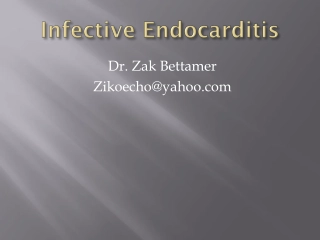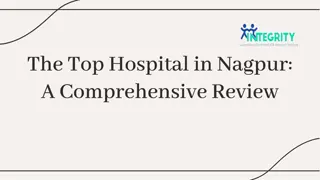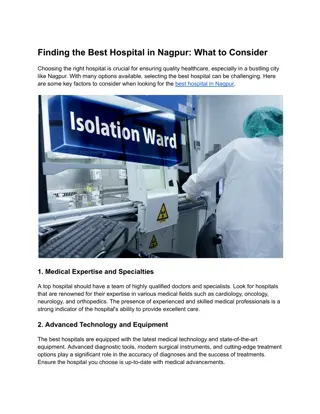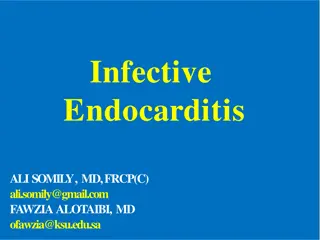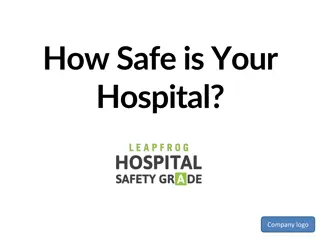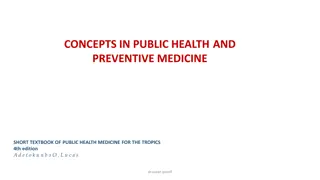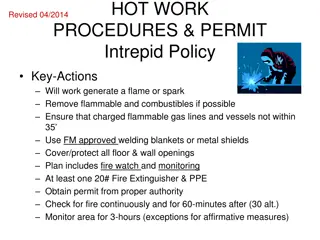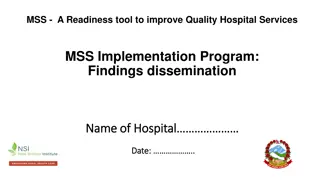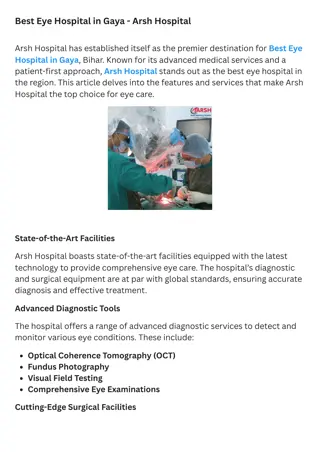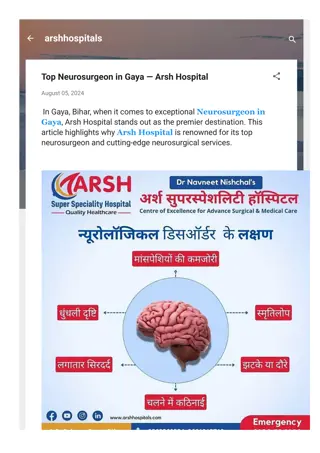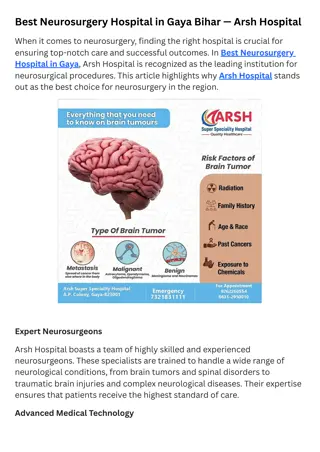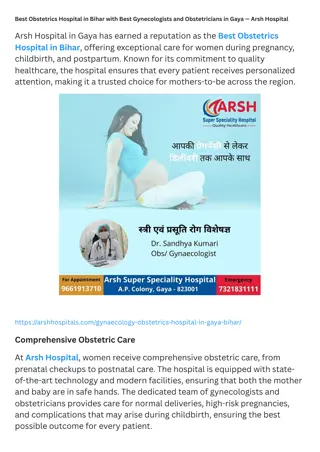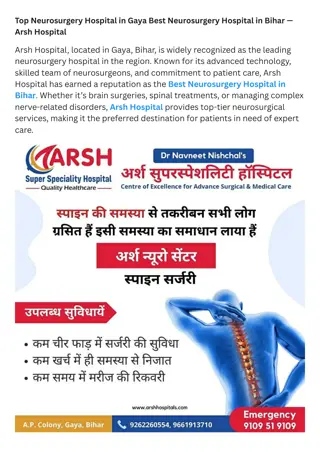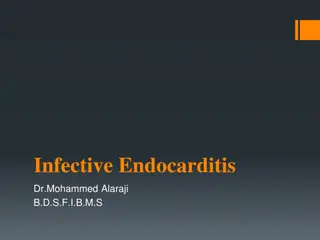Hot Topics in Hospital Medicine 2019: Endocarditis Treatment Dilemma
An active heroin user with endocarditis raises the question - should the patient stay in the hospital for IV therapy or be discharged with oral antibiotics? A randomized trial explores the feasibility of switching to oral antibiotics with similar outcomes. Inclusion criteria detail stability requirements and culture positivity, while exclusion criteria specify factors that preclude participation. The ultimate decision depends on individual patient factors and balancing risks and benefits.
Download Presentation

Please find below an Image/Link to download the presentation.
The content on the website is provided AS IS for your information and personal use only. It may not be sold, licensed, or shared on other websites without obtaining consent from the author.If you encounter any issues during the download, it is possible that the publisher has removed the file from their server.
You are allowed to download the files provided on this website for personal or commercial use, subject to the condition that they are used lawfully. All files are the property of their respective owners.
The content on the website is provided AS IS for your information and personal use only. It may not be sold, licensed, or shared on other websites without obtaining consent from the author.
E N D
Presentation Transcript
Hot Topics in Hospital Medicine 2019 Noppon Setji Hilton Head SC
Disclosures None Lack of proven scientific method
Case 1 27 yo Male who is an active heroin user is admitted to the hospital with endocarditis. Because the patient is still doing heroin, many of the providers want the patient to remain in the hospital for 6 weeks of therapy. The patient feels well and is independent in spirit and does not want to stay in the hospital. What do you recommend? A. Discharge the patient with a PICC line home to complete 6 weeks of therapy B. Pick some oral antibiotic regimen that should work and send him out C. Make the patient stay in house for 6 weeks for IV therapy D. It Depends
Trial Design Objectives: To evaluate whether patients with left sided infective endocarditis could be switched to an oral antibiotic regimen that would result in similar outcomes Design:Multi-center; randomized, Non-inferiority Trial Outcomes: Primary outcome was composite of all cause mortality, unplanned cardiac surgery, embolic events or recurrent bacteremia from randomization until six months after antibiotics were completed
Inclusion Criteria Adults Stable condition with Left sided endocarditis (native or prosthetic) who met modified Duke Criteria Culture positive for Strep, E. Faecalis, MSSA or Coag Neg Staph 10 Days of antibiotic therapy needed to remain
Inclusion Criteria Within 1-3 days of completion of abx, TEE performed to confirm patient had sufficient response to therapy
Exclusion Criteria Did not meet Duke s criteria Species of bacteria Refused to consent High CRP/WBC Abscess at valve Poor gi uptake Others
Study Design Randomized patients in Denmark who were referred to cardiac centers for IE Non-inferiority trial Estimated event rates from literature for each of the outcomes Also took blood levels of oral antibiotic regimen to ensure adequate gi uptake
Results dy Design
Results dy Design
Results dy Design
Concerns/Weaknesses dy Design Patients must have functioning GI tract MRSA not in this study FEW IVDA patients in this study (5!!!) Potential for referral bias
Bottom Line Patients with L sided endocarditis with streptococcus, E. Faecalis, MSSA or Coag Neg staph who were clinically stable can be considered for oral antibiotic therapy Would work closely with ID for follow up and monitoring plan
Case 1 27 yo IVDA is admitted to the hospital with endocarditis. Because the patient is still doing heroin, many of the providers want the patient to remain in the hospital for 6 weeks of therapy. The patient feels well and is independent in spirit and does not want to stay in the hospital. What do you recommend? A. Discharge the patient with a PICC line home to complete 6 weeks of therapy B. Pick some oral antibiotic regimen that should work and send him out C. Make the patient stay in house for 6 weeks for IV therapy D. It Depends
Case 2 27 yo Diabetic is admitted to the hospital with osteomyelitis. The patient is wanting to smoke but your hospital won t allow him to leave the floor to do it. The patient feels well and is independent in spirit and does not want to stay in the hospital. What do you recommend? A. Discharge the patient with a PICC line home to complete 6 weeks of therapy B. Pick some oral antibiotic regimen that should work and send him out C. Make the patient stay in house for 6 weeks for IV therapy D. It Depends
Article dy Design
Trial Design Objective: To determine if oral antibiotic therapy is noninferior to IV antibiotic therapy for bone or joint infections Design: Multi-center, open label, randomized controlled non-inferiority trial Outcomes:Definitive treatment failure within 1 year as defined by the following:
Outcomes- Treatment Failure Microbiologic Confirmation from deep tissue samples Histologic Confirmation: + micro in specimen
Study Design dy Design 1054 adult patients from UK 26 sites 5 years Patients would have received at least 6 weeks of IV therapy for acute or chronic bone or joint infection, osteomylelitis, native joint infection requiring arthroplasty, prosthetic joint infection or vertebral osteomyelitis
Study Design dy Design
Patients were Same dy Design
Study Design Frequent Assessments at day 42, 120, 365 Adherence to treatment assessed at day 14 and 42 using validated tool
Secondary Outcomes More IV catheter complications in IV group More early discontinuation of therapy in IV group No difference in c dif or ADEs Longer hospital stays for IV group No difference in patient reported outcomes
Antibiotics Used IV Group Glycopeptides 41% Cephalosporins 28% Oral Group Quinolones 44% Combination oral therapy 14%
Limitations Unclear if effect persists beyond 1 year Open label study Reliance on Infectious Disease specialist to come up with antibiotic regimen
Bottom Line Oral antibiotic therapy was noninferior to IV antibiotic therapy when used during first six weeks of therapy for bone and joint infections when assessed at one year Oral therapy is associated with shorter LOS, fewer IV catheter issues
Case 2 27 yo Diabetic is admitted to the hospital with osteomyelitis. The patient is wanting to smoke but your hospital won t allow him to leave the floor to do it. The patient feels well and is independent in spirit and does not want to stay in the hospital. What do you recommend? A. Discharge the patient with a PICC line home to complete 6 weeks of therapy B. Pick some oral antibiotic regimen that should work and send him out C. Make the patient stay in house for 6 weeks for IV therapy D. It Depends
Case 3 69 yo M with recently diagnosed prostate cancer comes to your clinic for a routine check up. He is planning to go on a road trip. You are concerned about his DVT risk. What do you recommend? A. Tell him to take frequent breaks and ambulate often B. Calculate his risk and prescribe warfarin if risk is high C. Calculate his risk and prescribe enoxaparin if risk is high D. Calculate his risk and prescribe apixaban if risk is high
Trial Design Objective: To assess the efficacy of apixiban prophylaxis in ambulatory patients with cancer at risk for DVT Design: Randomized, placebo controlled double blinded trial
Outcomes Primary First episode of VTE (proximal DVT or PE) within 180 days after randomization Safety Major Bleeding
Inclusion Criteria Population: Adults with newly diagnosed cancer or cancer progression who were starting chemotherapy for minimum of 3 months. Khorana score >2 or more
Exclusion Criteria High bleeding risk conditions such as liver disease with coagulopathy, basal or squamous skin cancer; acute leukemia or myeloproliferative neoplasm, planned stem cell transplant, life expectancy less than 6 months, GFR <30 or plts <50K Contraindication to apixiban
Intervention Apixiban 2.5mg twice daily vs placebo for 180 days First dose administered within 24 hrs of chemotherapy
Points of Interest Most common types of cancer were GYN 25%, Lymphoma 25% and pancreatic 13% Very few patients with colon or prostate cancers Absolute risk reduction was apixiban was 6% NNT = 17 NNH = 59
Bottom Line For ambulatory patients with cancer who are initiating chemotherapy, DVT prophylaxis with 2.5 mg apixiban twice daily resulted in significantly lower risk of VTE than placebo with increased risk of major bleeding
Case 3 69 yo M with recently diagnosed prostate cancer comes to your clinic for a routine check up. He is planning to go on a road trip. You are concerned about his DVT risk. What do you recommend? A. Tell him to take frequent breaks and ambulate often B. Calculate his risk and prescribe warfarin if risk is high C. Calculate his risk and prescribe enoxaparin if risk is high D. Calculate his risk and prescribe apixaban if risk is high
Case 4 A 76 yo M with htn, dm, cad, copd wakes up from sleep with new R arm weakness. He went to bed 8 hours ago. He is brought to the ED by EMS. CT imaging is consistent with an ischemic stroke. What do you recommend? A. No treatment beyond antiplatelet therapy and secondary prevention due to lack of clarity about onset of stroke B. Statin Therapy C. Consider IV thrombolytic therapy D. All of the above


